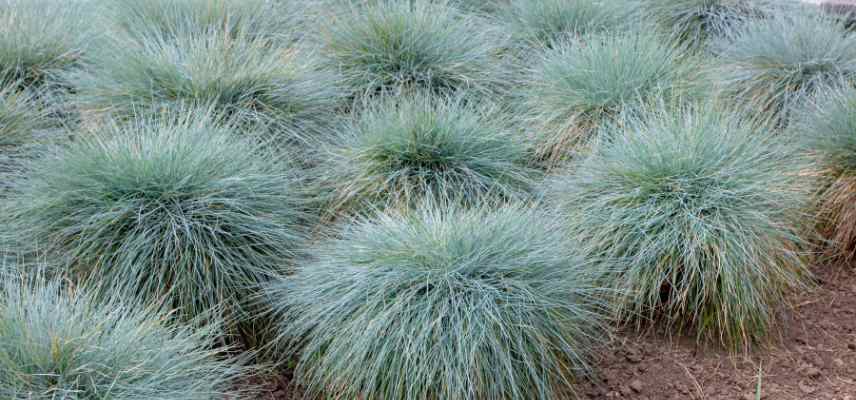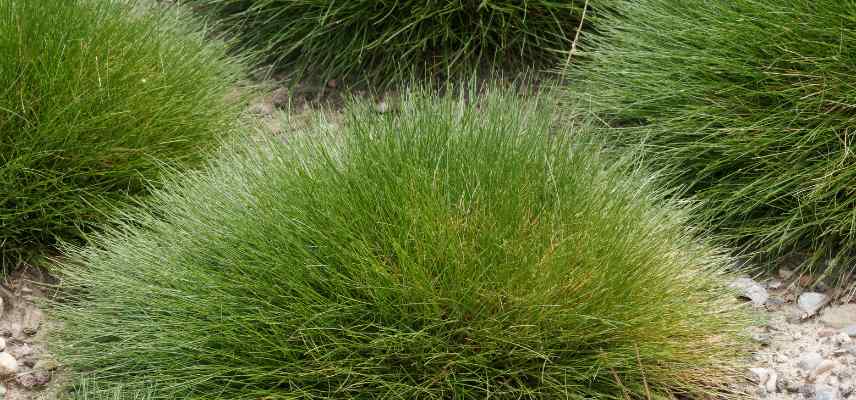Fescues or Festuca are queens of dry gardens and no‑irrigation gardens, noted for their bluish or green colours and low, mounded habit. Evergreen grasses for full sun, plant them in poor, dry, well‑drained soils, either as edging, within a perennial bed, or massed on a bank for a sunny effect! To keep them looking good over the years, pruning is sometimes necessary, depending on garden type. Let’s discover how to prune fescues…

Should fescues be pruned?
Pruning is really not obligatory, as this evergreen grass adopts a naturally rounded habit. However, you may want to show off the foliage on the dense clumps formed by fescues by removing flowering spikes. This also prevents fescues from self‑seeding freely in light, sandy soils that favour their spread. In a naturalistic garden, however, do not intervene: flowering and the dry spikelets and culms give a suitably untidy look!
This type of grass, like Carex, generally just needs tidying by removing dead leaves: you do a sort of plucking, leaf by leaf, when a clump is damaged.
Annual pruning mainly helps keep clumps neat if planted in a contemporary garden, for example where you want a very graphic result, or if fescues are old and very damaged.

When to prune fescues?
Prune in spring, between March and April at the latest, depending on region, before the plant begins to produce new leaves.
How to care for or prune a fescue?
On mature clumps that tend to die back and become unsightly, cut fescues right back. Use a sharp, disinfected shear. Cut them back in late winter to 10 cm or to one‑third of their height to stimulate fresh new leaf growth. Trim with a rounded shape at the edges to give a more natural appearance.
If only dead foliage is the problem, remove dry, yellowing or brown leaves by plucking, which will give the plant a little boost. Ideally use a pruning shear of the épinette type for this delicate work, more precise for very fine leaves of fescues, or use a garden comb.
Further reading
Find all our fescue varieties and our ideas for pairings with fescues.
For everything about fescues, discover our full sheet Fescue: planting, care and if you love fescues read our article 7 blue grasses.
































Comments